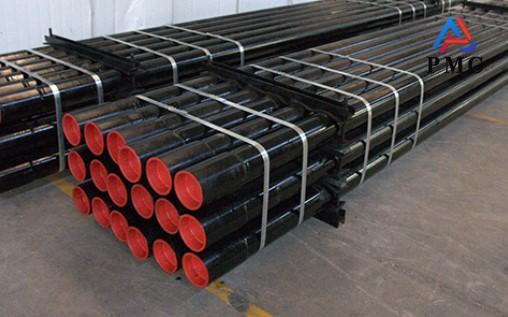
Drill Pipe Price & Cost
Drill pipe is a core component in oil and gas drilling and geological exploration. Mostly made of seamless pipe, it transmits drilling power and transports drilling fluid. Prices vary widely, ranging from a few dozen yuan for ordinary exploration drill pipe to thousands of yuan for high-strength, specialized oil and gas drill pipe. Raw materials account for over 50% of the cost, and production, processing, testing, and maintenance also factor in. Market supply and demand also influence final pricing. The following are the main components of drill pipe prices and the factors influencing their cost:
Key factors affecting drill pipe prices
1. Type and specifications
Drill pipe prices are influenced by their intended use, material, and specifications. Oil well drill pipe, due to its harsh operating conditions, is made of high-quality alloy steel and undergoes specialized processing, resulting in higher prices. Geological exploration drill pipe prices vary depending on demand. Drill pipe with larger diameters and longer lengths is more expensive, and special high-strength sealing joints are also more expensive than standard joints.
2. Degree of wear and tear and condition
The more worn a used drill pipe is, the lower its price. Wear shortens its lifespan and reduces its performance. New drill pipe is reliable but expensive, while used drill pipe is even cheaper. Small projects with limited budgets and low performance requirements choose used drill pipe to reduce costs, while large projects with high performance requirements tend to favor new drill pipe.
3. Market supply and demand and brand
Drill pipe prices are significantly impacted by market supply and demand: During peak season, surging demand in the oil industry leads to supply shortages and price increases; during off-season, oversupply leads to price declines. Brand also influences prices. Well-known brands command high premiums due to their significant investments in R&D and quality control, resulting in reliable products. Users are willing to choose high-priced, well-known brands to minimize potential problems.

Drill pipe cost
1. Raw material costs
Steel is the primary raw material for drill pipe production, and its price fluctuations directly impact drill pipe costs. In the international market, steel prices are influenced by factors such as iron ore prices, steel production capacity, and the global economic situation. Rising iron ore prices increase steel production costs, which in turn increases steel prices and, consequently, drill pipe costs. In addition to steel, drill pipe production also utilizes auxiliary materials, such as corrosion-resistant coatings. While these materials contribute a relatively small portion of the cost, they are not negligible.
2. Production and processing costs
Multiple processes in drill pipe production incur costs: cutting and rough turning involve equipment loss, labor and energy costs; modulated heat treatment requires professional equipment and precise temperature control, and equipment maintenance and energy consumption increase costs; thread processing and nitriding treatment also have costs, and friction welding accounts for a larger proportion of processing costs due to its high equipment technical requirements.
3. Inspection and maintenance costs
Drill pipe requires rigorous inspection and maintenance before and after use to ensure performance and safety. Inspection equipment, such as ultrasonic flaw detectors and magnetic particle flaw detectors, is expensive and requires regular calibration and maintenance. The inspection process requires specialized technicians, resulting in high labor costs. Regarding maintenance, drill pipe may become subject to wear and corrosion after use. Repairs, such as replacing worn joints and repairing corroded areas, require both material and labor costs.
Strategies for reducing drill pipe costs:
1. Bulk purchasing: Sign long-term agreements with drill pipe manufacturers or suppliers to lock in prices.
2. Design optimization: Select the appropriate steel grade based on well depth to avoid over-provisioning.
3. Local supply: Reduce transportation and tariff costs (e.g., Chinese manufacturers supplying the Central Asian market).
4. Maintenance to extend lifespan: Regularly inspect and repair thread wear to reduce replacement frequency.
Conclusion
The price and cost of drill pipe are influenced by a variety of factors, including type and specification, wear level, market supply and demand, raw materials, production and processing, testing and maintenance. Understanding these factors is crucial for both buyers in selecting appropriate drill pipe and manufacturers in controlling costs and improving product competitiveness. In practice, buyers can balance price and quality based on project requirements and budget, selecting cost-effective drill pipe. Manufacturers can reduce costs and increase market share while ensuring product quality by optimizing production processes and controlling raw material costs.
Read more: Common Drill Pipe Connection
- 【Prev】 : ASTM A53 Grade A vs Grade B Pipes
- 【Next】 : Passivation Treatment Time of SMLS Pipe


